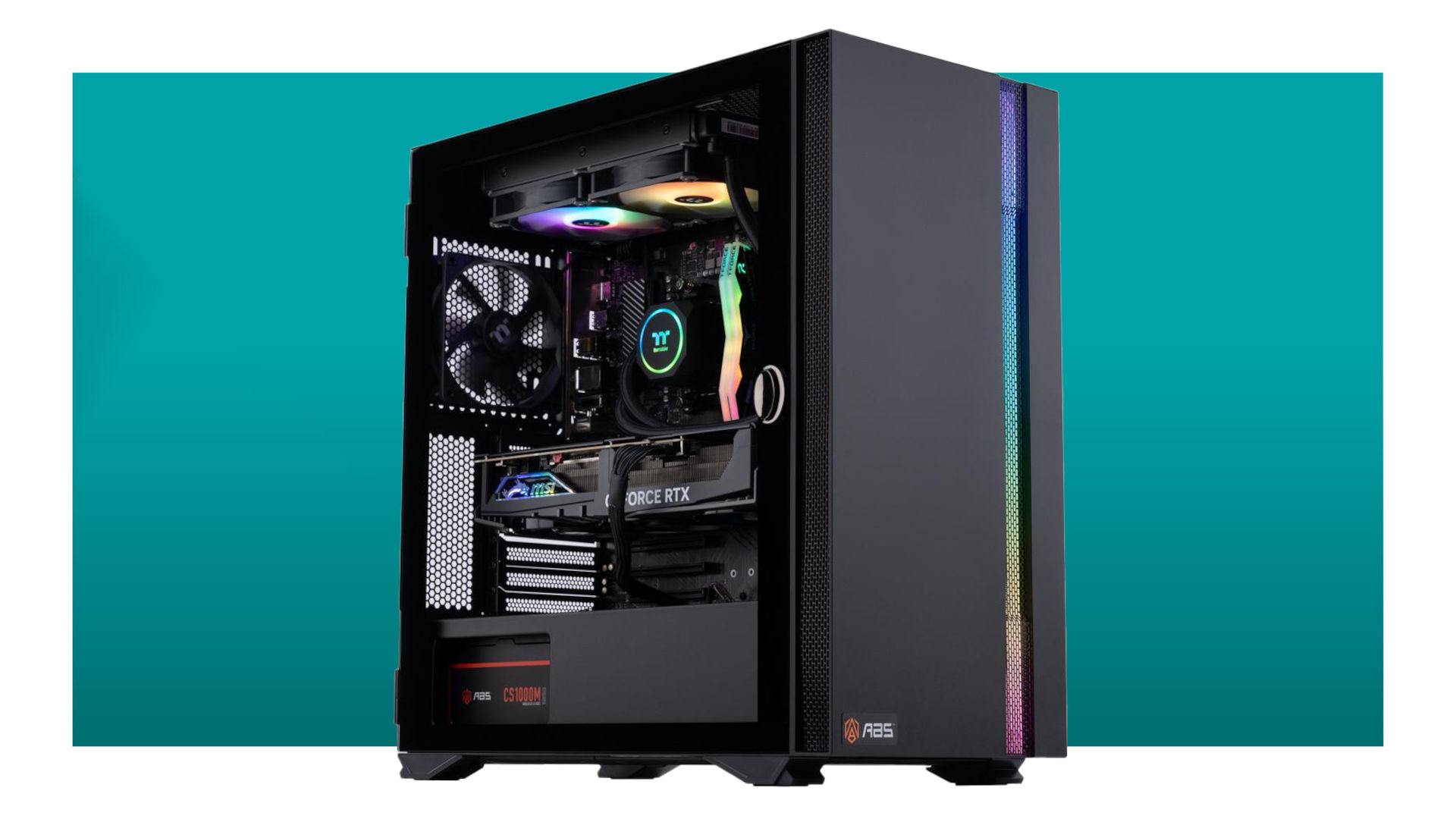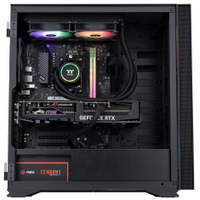It's not often you find an RTX 4080 Super gaming PC for under $2,000. Well, today's your lucky day
High-end gaming PCs should be all about the GPU so it's only right that you should be getting Nvidia's 2nd fastest one.

ABS Vortex-X Ruby | Ryzen 7 7700X | RTX 4080 Super | 32 GB DDR5-6000 | 1 TB SSD | $2,399.99 $1,999.99 at Newegg (save $400)
High-end gaming PCs should be all about the GPU and here you're getting Nvidia's 2nd most powerful one. Paired with a solid CPU and lots of fast RAM, you'll be good for years of 4K gaming.
Pre-built gaming PCs can sometimes be a little odd when it comes to the balance of CPU and GPU power inside. For 4K gaming, you want most of the build's budget to have been spent on the graphics card—as long as the CPU is decent enough, of course. Well, you've got no worries on both those counts with this ABS Vortex-X Ruby.
The star of the show is the GeForce RTX 4080 Super. It's an MSI Gaming X Slim model and offers a very mild overclock of up to 3%, via the MSI Centre app. Not that this really matters, as the RTX 4080 Super is Nvidia's 2nd most powerful gaming GPU—only the RTX 4090 is faster, but you're not going to get one of those in a prebuilt gaming PC for under $2000!
As with all of the RTX 40-series models, it supports all of the latest DLSS 3.5 AI-driven features, including Super Resolution upscaling, Frame Generation, and ray tracing denoising. In games that offer the option to use the first two, you can slap them on and enjoy great frame rates at 4K, with all of the graphics options set to their maximum values.
ABS has paired the GPU with a Ryzen 7 7700X processor. It's not AMD's best CPU for gaming (the Ryzen 7 7800X3D holds that crown) but you're not going to have any complaints—eight cores, 16 threads, 32 MB of L3 cache, 5.4 GHz boost clock, and a TDP of 105 W all go to making this is a thoroughly decent CPU.
AMD Ryzen chips need fast, dual-channel RAM to reach their full potential and the good news continues, as there's 32 GB (2 x 16) of DDR5-6000 fitted in the motherboard. That's the ideal balance of speed and stability for Zen 4 processors and it's great to see it being used here. The RAM even boasts RGB lighting, something that's not always used in prebuilt PCs.
Even the power supply unit is suitable, rated to 1000 W, which is more than enough for all of the components here and should provide plenty of scope for tackling any power-hungry device in the future.
Of course, to keep the price under the $2,000 mark, ABS has needed to trim the fat off somewhere. The motherboard is an MSI Pro B650-VC WIFI II model and while it's perfectly fine, there are only two DIMM slots for RAM, no Gen5 M.2 slots for SSDs, and the additional PCIe slots beyond the primary connection are physically x16 in size but are 3.0 x1 internally.
At least there are three PCIe 4.0 M.2 slots, though one of them is only an x2 connection. That makes it somewhat of a budget motherboard, which is a bit of a shame, but at least there's scope to upgrade the disappointing Kingston 1 TB SSD that comes with the Vortex-X Ruby.
You might think that 1 TB is big enough but I would have liked to have seen 2 TB or at the very least, a 1 TB drive that wasn't as slow as this one. While it's a Gen4 SSD, Kingston's NV2 models only have peak read/write speeds of 3,500 and 2,800 MB/s—those are pretty much Gen3 speeds. I'd grab a faster gaming SSD to store all my games on.
Slow SSD aside, everything else is speedy and powerful. For a cent under $2,000 you're getting a seriously good gaming PC and it will serve you well for many years to come.
The biggest gaming news, reviews and hardware deals
Keep up to date with the most important stories and the best deals, as picked by the PC Gamer team.

Nick, gaming, and computers all first met in 1981, with the love affair starting on a Sinclair ZX81 in kit form and a book on ZX Basic. He ended up becoming a physics and IT teacher, but by the late 1990s decided it was time to cut his teeth writing for a long defunct UK tech site. He went on to do the same at Madonion, helping to write the help files for 3DMark and PCMark. After a short stint working at Beyond3D.com, Nick joined Futuremark (MadOnion rebranded) full-time, as editor-in-chief for its gaming and hardware section, YouGamers. After the site shutdown, he became an engineering and computing lecturer for many years, but missed the writing bug. Cue four years at TechSpot.com and over 100 long articles on anything and everything. He freely admits to being far too obsessed with GPUs and open world grindy RPGs, but who isn't these days?


